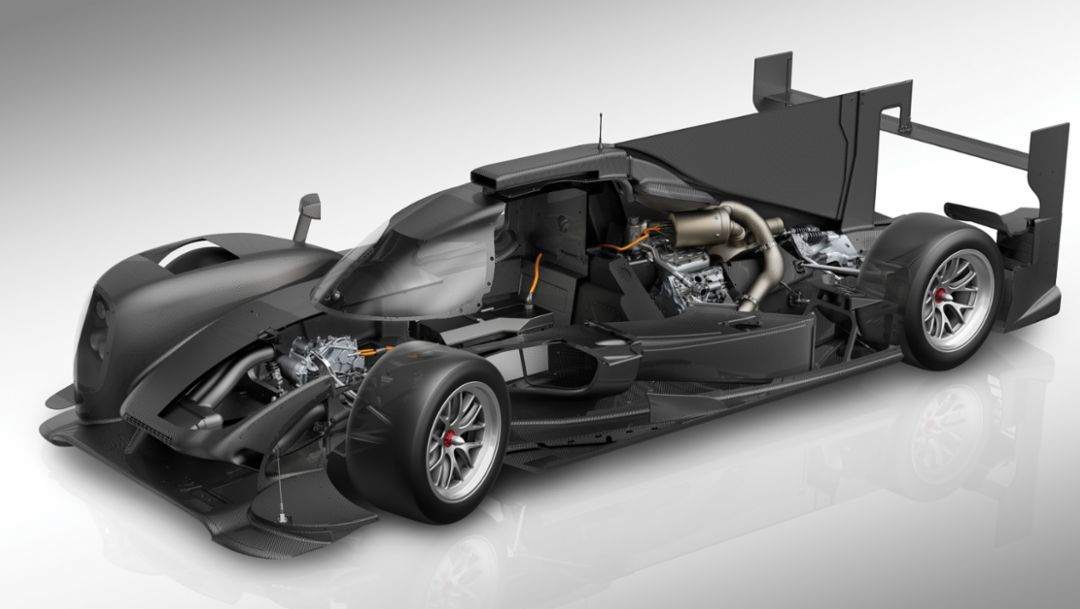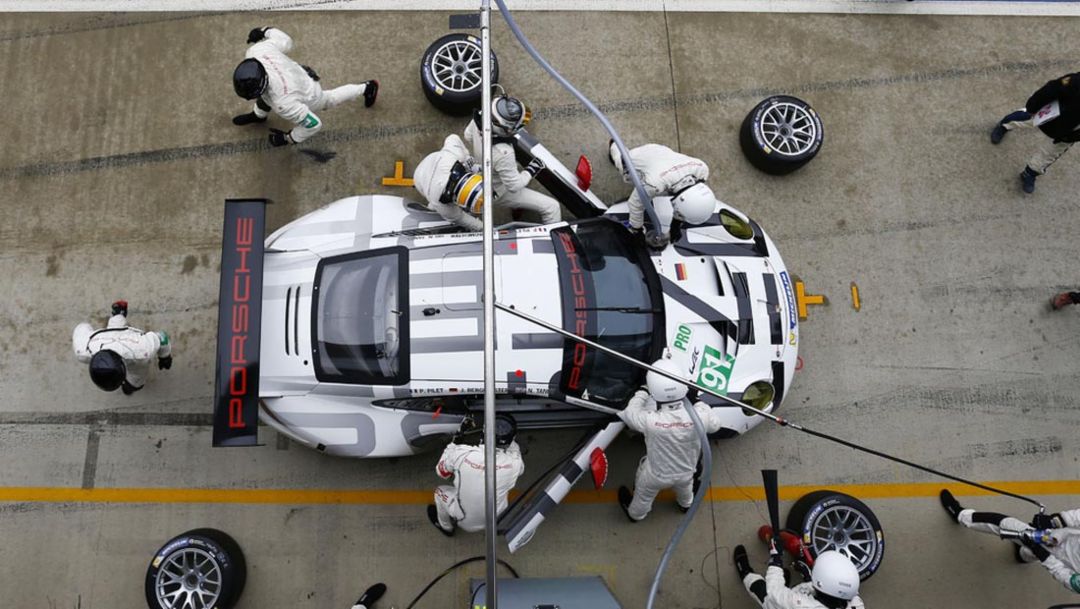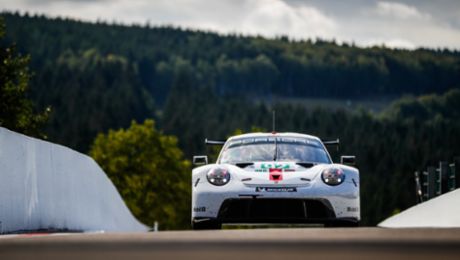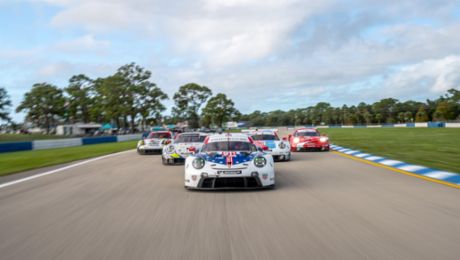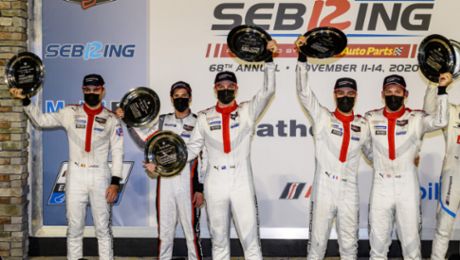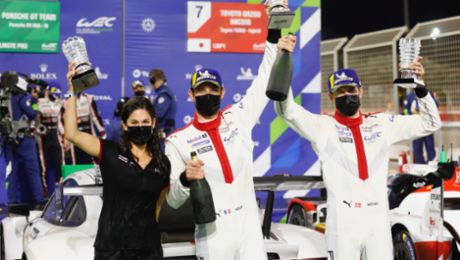Porsche heads to Silverstone full of energy
The Porsche Team is crossing the days off on the calendar until the season’s opening round of the 2015 FIA World Endurance Championship (WEC).
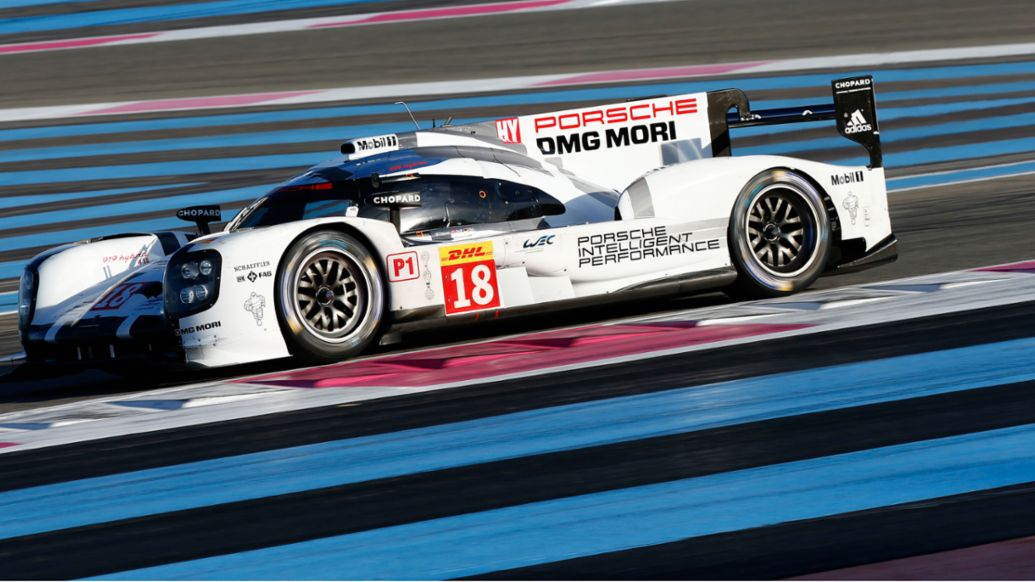
Next weekend, April 10 to 12, Silverstone (GB) will be the venue for the first of seven six-hour races in the eight round championship for which the 24 hours of Le Mans is the highlight. In the lead up to the second season since Porsche’s return to top-level motorsport, 30,863 kilometres of testing have been covered with the significantly further developed 919 Hybrid.
The 2nd generation of the 919 Hybrid has become more efficient and stronger
The revolutionary WEC regulations, introduced for the 2014 season, demand powerful and innovative hybrid systems, which was the decisive factor in Porsche’s return. The second generation of the Porsche 919 Hybrid has become even more efficient and stronger. Intense development work on the three-part powertrain has allowed Porsche to enter the highest energy recovery class of eight megajoule for the very first time.
No other race car turns over so much energy as the Porsche 919 Hybrid – that includes both Formula One cars and other car manufacturers’ Le Mans Prototypes. The art of engineering to bring out hybrid systems with an extreme turn over of energy is highly meaningful for electric road going cars such as the plug-in-hybrid models from Porsche.
Porsche obliged to develop far reaching innovations for hybrid systems
Car manufacturers who compete with their class 1 Le Mans Prototypes (LMP1) for overall victories in the WEC are obliged to develop far reaching innovations for hybrid systems. Therefore engineers are given greater freedom than in any other top-class racing series. For the combustion engine, for example, many designs are possible – be it diesel or petrol, normally aspirated or turbo charged, a compact or a high voluminous machine. Alongside the combustion engine at least one energy recovery system is mandatory. More than one is possible.
How these systems work and how the energy is stored is also free. But what is rigorously limited is the energy consumption per lap. This goes for fuel consumed as well as for electricity – and both depend on each other. The rule of thumb is: The more electric energy a car produces, the less fuel it may consume. This results in a highly complex cost-benefit calculation for engineers and ultimately creates know-how for Porsche’s future road going sports cars.
The Porsche 919 Hybrid’s two-litre V4-cylinder turbo charged petrol engine is the most compact and efficient combustion engine Porsche has built so far, it is downsizing technology of paramount quality. This engine powers the rear axle with over 500 hp. When the driver recalls the stored energy from the battery, an extra good 400 hp drives the front axle. This way the Porsche 919 Hybrid temporarily turns into a four-wheel drive car with around 1,000 hp system performance.
The 919 is equipped with two different energy recovery systems. One converts kinetic braking energy from the front axle into electricity, the other does the same by a turbine in the exhaust. The latter one makes the Porsche 919 Hybrid the only prototype in the World Championship which also produces electricity when accelerating. The storage for the electricity from both systems is a specifically developed, liquid cooled lithium-ion battery.
The 2015 Porsche 919 Hybrid is lighter and more robust at the same time
It can take and release a high amount of energy in a short time (high power density), but can still save a relatively high amount of energy as well (energy density) and comes with a convenient weight. Thanks to a clever design from the monocoque to the power train, the 2015 Porsche 919 Hybrid is lighter and more robust at the same time. In 2014 the car was about 30 kilos heavier than the minimum weight of 870 kilos. Now it matches that limit despite the improved hybrid systems.
Alexander Hitzinger, Technical Director LMP1, summed up the technical challenges: “The switch from the six to the eight megajoule class must be beneficial. To find out if this is the case, you have to take many factors into account and you have to overcompensate disadvantages, otherwise it doesn’t make sense. This means: First, although the lower fuel amount costs combustion engine power, second, although the potential for the energy recovery on seven circuits is smaller than in Le Mans and, third, although some components are heavier, still the lap times must be better because of the additional energy.”
The drivers have now one year of experience with the concept
The drivers have now one year of experience with the concept under their belts. Timo Bernhard (Germany), Brendon Hartley (New Zealand) and Mark Webber (Australia) continue to race together and will share car number 17. The sister number 18 car is driven by Romain Dumas (France), Neel Jani (Switzerland) and Marc Lieb (Germany), who also became a ‘bullet proof’ team and drove together in 2014.
Fritz Enzinger, Vice President LMP1, said before the season’s opener: “We’re still a young team, but we finished our debut season with a race win in Brazil and expectations have increased accordingly. We have done intense preparation work for the start of the WEC. The two six-hour races in Silverstone and Spa, plus another two endurance tests, will complete the preparation for the season’s highlight at Le Mans in June.”
Porsche is also well prepared for the GT class
The Porsche Manthey squad, who celebrated a double victory in the GTE-Pro class last year, campaigns two Porsche 911 RSR sports cars on the storied circuit in the British Midlands. Many details on the 470 hp winning racer from Weissach, which is based on the seventh generation of the iconic 911 sports car, were modified over the winter months. Recently, the 911 RSR posted impressive lap times at the official WEC Prologue at Le Castellet in southern France.
Four works drivers contest the GTE-Pro class for the Porsche Manthey outfit with the Porsche 911 RSR at Silverstone: Michael Christensen (Denmark) and Richard Lietz (Austria) contest their first WEC season together at the wheel of the #91 Porsche 911 RSR. Their works driver colleagues from France Frédéric Makowiecki and Patrick Pilet share driving duties in the number 92 vehicle. The American actor and race driver Patrick Dempsey tackles the GTE-Am class with factory driver Patrick Long (USA) and Marco Seefried (Germany) in the 911 RSR fielded by the Dempsey Proton Racing customer team. Only vehicles that are homologated to the previous year’s GTE-Pro class are eligible to compete in this class.
For the 2015 season, the 911 RSR underwent modifications
The Porsche 911 RSR is based on the seventh generation of the iconic 911 sports car – and it is the fastest nine-eleven ever. The insights gained during the vehicle’s development and at race outings are also directly incorporated into the design of future 911 generations. For the 2015 season, the 911 RSR underwent modifications over the winter months and is characterised by a consequent lightweight design and sophisticated aerodynamics.
The revamped aerodynamics at the front and the adapted suspension kinematics ensure enhanced balance and improved control at its handling limits. Thanks to minor tweaks, the reliability of the drivetrain was further improved. Single point refuelling greatly contributes to additional safety in the pit lane: The refuelling system utilises one hose for both filling and venting, leaving only one refueller to work on the car.
Facts and figures
- The first six-hour race of the 2015 FIA WEC gets underway on April 12 at 12:00 hrs local time (13:00 CEST).
- The TV channel Eurosport will broadcast from 18:00-19:15 hrs CEST.
- One lap on the famous circuit is 5.901 kilometres and has 18 corners.
- The track’s profile has a good balance. It has neither extreme long straights nor an extreme number of braking points. Aerodynamically at Silverstone a lot more downforce is required than in Le Mans.
- In 2014 the winning car covered 167 laps.
- The fastest qualifying laps by the Porsche 919 Hybrid back in 2014 were done by Romain Dumas and Neel Jani with an average lap time of 1:43.087 minutes. This was good enough for third on the grid. The sister car, with Timo Bernhard and Mark Webber sharing qualifying duties, qualified sixth with an average lap time of 1:43.226 minutes.
- In the race, Dumas/Jani/Lieb had to retire after one hour and 15 minutes because of a technical problem. Bernhard/Hartley/Webber celebrated the first podium at the 919’s maiden race by coming third.
- In 2014 the six-hour race had to be red flagged 24 minutes early because of heavy rain.
